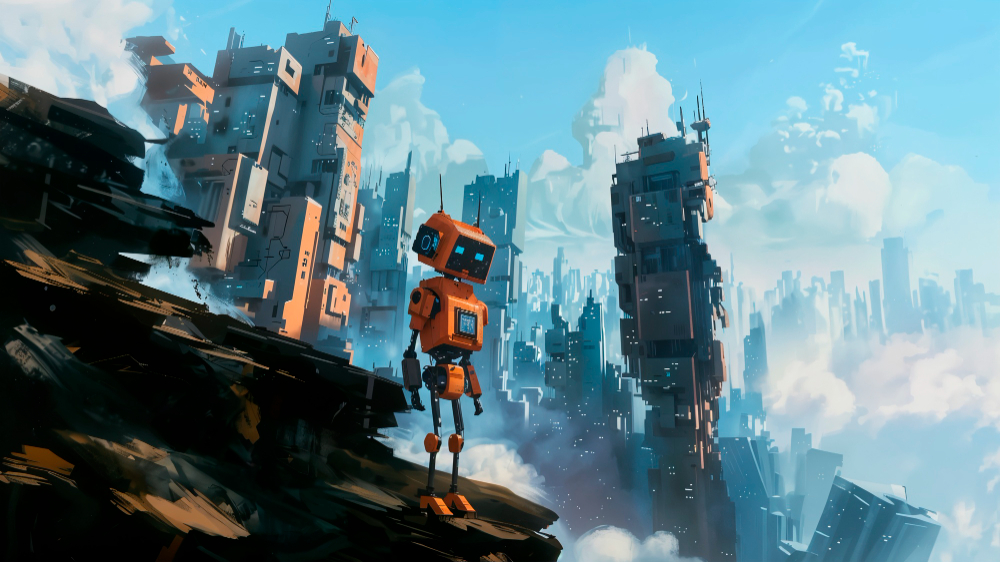3D modeling has revolutionized the way we create and interact with digital environments. From the simplest mobile phone app to complex architectural designs, the integration of traditional sculpting methods with cutting-edge specialized software has transformed industries and broadened the horizons for designers and artists alike. This blog delves into how these innovations merge to create highly detailed models, enhance realism, and pave the way for more immersive and engaging experiences.
The Evolution of 3D Modeling
Traditional sculpting methods have long been the cornerstone of creating detailed and lifelike objects. Artists and designers would use clay and other materials to sculpt physical models before translating their designs into digital formats. This method allowed for intricate detailing and a tangible connection to the model being created.
However, as technology evolved, specialized software began to play a significant role in the 3D modeling process. Software like Blender, Maya, and 3ds Max introduced new possibilities in polygonal modeling, procedural modeling, and more. These tools allowed for more efficient and precise creation of highly detailed models, enabling designers to produce complex forms and intricate details that were difficult to achieve through traditional methods alone. Export functions in modern software facilitate the transition from physical to digital, while the history of these methods highlights their development over time. Today, companies utilize these advanced tools to create models with finely tuned edges, pushing the boundaries of what is possible in 3D modeling.
Merging Techniques for Enhanced Realism
The combination of traditional sculpting methods and specialized software has led to breakthroughs in creating realistic environments. Traditional sculpting still provides the artist with a tactile way to understand the textures and shapes of their models. By integrating these methods with advanced software, designers can create highly detailed models that reflect the nuances of real-world objects.
Specialized software offers features that enhance the realism of 3D models, such as advanced texturing, shading, and lighting options. This integration allows for the accurate representation of organic shapes and textures, making the models more lifelike and suitable for applications in various industries, including architecture, engineering, and product design.
Innovations in 3D Modeling Software
Modern 3D modeling software has revolutionized the way artists and designers approach their projects. Here are some key innovations and how they impact the field:
Advanced Tools for Detailed Modeling
Tools like ZBrush and Substance Painter provide powerful options for manipulating shapes, surfaces, and details. These tool allow artists to create highly detailed models with ease, enhancing the overall art of the project.
Versatile Modeling Methods
Polygonal modeling and procedural modeling are two prominent techniques in modern software. Polygonal modeling is ideal for creating precise and controlled shapes, while procedural modeling enables the creation of intricate patterns and structures through algorithms and rules. These methods offer unique advantages for different types and shapes of projects.
Integration of Traditional Techniques
Combining traditional sculpting methods with modern software can produce impressive results. By integrating these methods, designers can achieve a higher level of realism and creativity in their models, whether they’re creating realistic characters or expansive large-scale environments.
Enhanced Collaboration
Specialized software often includes features that facilitate real-time collaboration. This allows designers and clients to work together more effectively, exchanging ideas and feedback to improve the project.

Refined Modeling Components
Modern tools offer refined control over components of models, such as edges, surfaces, and shapes. This precision ensures that every aspect of the model meets the desired specifications and enhances the final result.
Efficient Workflow
With the ability to export models into various formats, designers can efficiently integrate their work into different platforms and applications. This feature is crucial for streamlining the workflow and ensuring that models are suitable for various uses, from animation to virtual reality.
Innovative Applications
The combination of advanced tools and methods opens up new possibilities for 3D modeling. Whether for art projects, product design, or interactive experiences, these innovations help bring creative ideas to life and meet the needs of diverse industries.
By leveraging these advancements in 3D modeling software, designers can enhance their projects and create more engaging and realistic experiences. The evolution of these tools continues to push the boundaries of what is possible, making it an exciting time for the field of 3D modeling.
Practical Applications and Benefits
The fusion of traditional sculpting methods and digital techniques has a profound impact across different industries. In architecture, highly detailed models enable designers to visualize and present their concepts with greater accuracy. Engineers can use detailed models to simulate and test designs before physical construction, enhancing efficiency and reducing errors.
In the realm of product design, the ability to create detailed digital prototypes allows for faster iteration and testing. Designers can experiment with various materials and textures in a virtual space before committing to physical production. This approach not only saves time but also ensures that the final product meets the desired specifications.
Moreover, the creation of realistic environments is essential for video games and virtual reality experiences. By using a combination of traditional sculpting and digital techniques, developers can craft immersive worlds that captivate users and provide a seamless, interactive experience.
The Role of Specialized Software in Enhancing Creativity
Specialized software plays a critical role in expanding the possibilities of 3D modeling. With real-time collaboration features, designers can work together on projects regardless of their physical location. This accessibility fosters a more dynamic creative process and allows for the exchange of ideas and feedback.
Additionally, 3D modeling software often includes tools for exporting models into various formats, making it easier to integrate them into different platforms and applications. Whether it’s for web use, mobile apps, or high-resolution rendering, the versatility of modern software ensures that models can be utilized effectively across multiple domains.
Bridging the Gap Between Traditional and Modern Techniques
Integrating traditional sculpting methods with modern software allows for the creation of highly detailed models that capture the best of both worlds. Artists and designers can leverage their skills in sculpting while taking advantage of the advanced features offered by digital tools. This combination not only enhances the quality of the models but also broadens the creative possibilities.
For students and professionals alike, understanding both traditional and digital techniques provides a strong foundation for creating impressive and realistic models. Learning the basics of traditional sculpting alongside mastering 3D modeling software equips individuals with the skills necessary to excel in various fields, from animation to engineering.
Exploring Different Types of Modeling Techniques
The variety of modeling techniques available today offers designers incredible flexibility to tackle diverse projects. Here’s a look at some of the most prominent methods and their applications:
Polygonal Modeling
Polygonal modeling is ideal for creating structured and geometric shapes. This technique excels in defining hard surfaces and precise edges, making it suitable for projects that require accuracy and controlled forms. It’s widely used in game design, architecture, and product design.
Procedural Modeling
Procedural modeling generates complex patterns and textures through algorithms and rules. This method allows for the creation of intricate designs and repetitive patterns that would be time-consuming to model manually. It’s particularly effective for generating natural environments, abstract forms, and large-scale assets.
Traditional Sculpting Methods
Traditional sculpting methods provide a tactile approach to understanding form, volume, and detail. This technique is crucial for artists who want to capture organic shapes and intricate details before translating their designs into digital formats. Combining this tactile experience with digital tools enhances realism and creativity in models.
Integration of Digital and Traditional Techniques – Highly Detailed Models
By blending traditional sculpting methods with digital techniques, designers can achieve a higher level of realism and creativity. This fusion allows for the precision of digital tools while retaining the nuanced details that come from physical sculpting, resulting in models that are both detailed and expressive.
Enhancing Creativity with Modern Tools
Modern 3D modeling software provides advanced features that enhance creativity and efficiency. Tools for polygonal modeling, procedural modeling, and sculpting enable designers to experiment with various techniques and refine their projects to meet specific requirements.
Application in Diverse Projects for Large Scale Environments
Whether designing characters, large-scale environments, or highly detailed models, choosing the right modeling technique is crucial. Each method offers unique advantages that can be leveraged depending on the project’s goals, whether for animation, virtual reality, or other applications.
The Future of 3D Modeling
As technology continues to advance, the possibilities for 3D modeling will only expand. Innovations in specialized software will further enhance the realism and complexity of models, while new techniques and tools will continue to emerge. The fusion of traditional sculpting methods with modern software will remain a key driver of creativity and efficiency in the industry.
The integration of augmented reality and virtual reality technologies into 3D modeling workflows will also open up new avenues for interaction and immersion. Designers will be able to create and visualize models in entirely new ways, providing more engaging and interactive experiences for users.

Conclusion
The fusion of traditional sculpting methods with specialized software has marked a significant evolution in 3D modeling. This innovative approach allows designers to access advanced tools to create highly detailed models and large-scale environments that were previously unimaginable. As technology continues to advance, the possibilities for creativity and realism in 3D assets will only expand, offering new ways to collaborate and push the boundaries of what can be achieved. For those looking to dive deeper into the world of 3D modeling and enhance their skills, 3DAiLY offers comprehensive resources and tools tailored for creating stunning models and environments. Data and insights are widely available to help you refine your techniques and improve your projects. Explore 3DAiLY today and take your 3D modeling projects to the next level. Start creating with 3DAiLY and bring your ideas to life!



